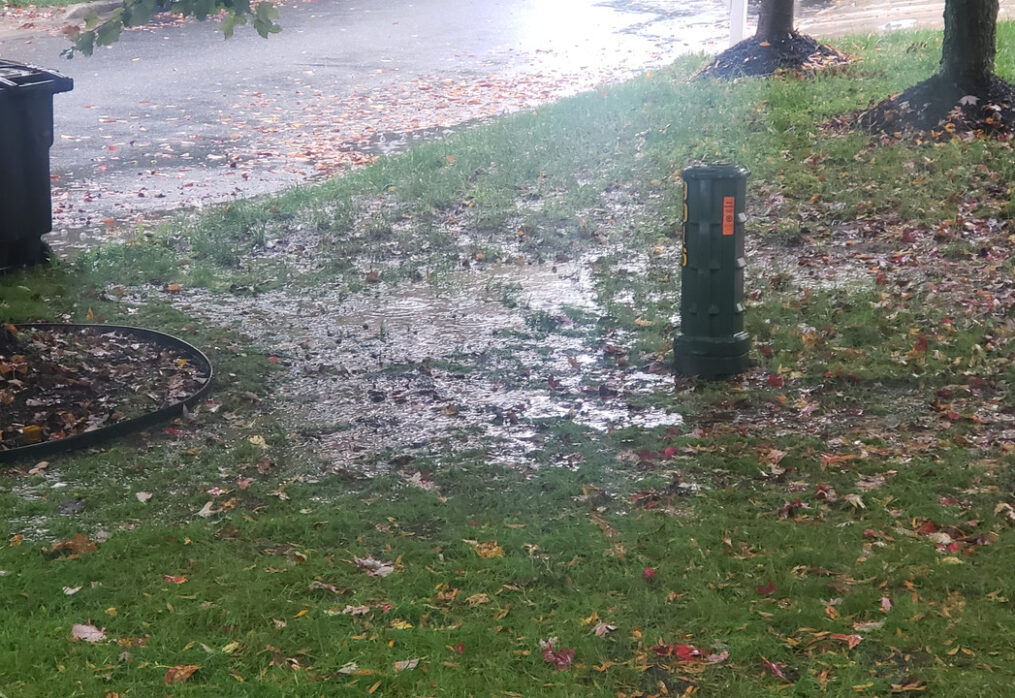4 Common Signs of Lawn Drainage Issues
The neighborhood will be envious of your beautiful, green grass, but maintaining this picture-perfect lawn takes more than just regular fertilization and mowing. A healthy lawn is largely dependent on proper drainage. If your grass is having trouble, there may be drainage issues underneath. Here are four typical indicators to watch out for (4 Common Signs of Lawn Drainage Issues):
1. Durable Puddles
While some water retention on your lawn following a significant downpour is typical, persistent puddles that last for days are cause for concern. Water cannot seep into the soil due to poor drainage. This may cause fungal infections, root rot, and even draw unwelcome pests like mosquitoes.
What to do: It’s time to look into the drainage condition if you see puddles that don’t go away. To determine the issue and provide remedies, think about getting expert assistance.
2. Wet or Muddy Places
Another sign of drainage problems is if some areas of your lawn are constantly muddy or wet, even after a little rain. Compacted soil, improper grading, or clogged drains can all be the cause of this.
What to do: By making it easier for water to permeate the soil, aerating your grass can aid with drainage. Should the issue continue, you might need to think about hiring a professional drainage company.
3. Thinning and Discoloration of the Lawn
The roots of your grass may get soggy if the drainage isn’t enough. The grass may become thinner, discolored, and yellowed as a result of this. Furthermore, fungal infections might further harm your grass because they like damp environments.
What to do: To avoid waterlogging, improve drainage. If you want to thicken your grass and enhance its general health, think about overseeding.
4. Degradation
When water runs off your grass rather than seeping into the soil, poor drainage can exacerbate erosion. This may result in topsoil loss and ugly gullies.
What to do: Put erosion management techniques into practice, such as planting ground cover or spreading mulch. Reducing erosion will also benefit from improved drainage.
Recognizing the Offenders
Lawn drainage issues can be caused by a number of variables, including:
• Compacted soil: Soil can become compacted over time, which lowers its capacity to absorb water.
• Subpar evaluation: Water might collect on your lawn if it slopes in the direction of your home or other structures.
• Blocked drains: Water may not be able to escape your yard due to clogged gutters, downspouts, or drainage pipes.
• Clay soil: Clay soil is more prone to waterlogging due to its poor drainage qualities.
Homemade Drainage Fixes
Although certain drainage problems need for expert assistance, you can attempt the following do-it-yourself fixes:
• Aerate your lawn: To enhance water and air circulation, this procedure entails poking tiny holes in the ground.
• Enhance soil structure: Soil drainage may be enhanced by adding organic matter, such as compost.
• Inspect downspouts and gutters to make sure they are clear of debris and clean.
• Build a swale: Water may be diverted from your lawn by digging a small trench.
When to Make a Professional Contact
It is time to bring in a professional if do-it-yourself fixes don’t work or if the drainage problem is serious. They are able to evaluate the circumstances, pinpoint the root reason, and suggest workable remedies.
Preventive Actions
Maintaining a healthy lawn requires preventing drainage issues. Here are some pointers:
• Aerate the grass on a regular basis to help avoid soil compaction.
• Refrain from overwatering: Too much watering might exacerbate drainage problems.
• Spotless downspouts and gutters: Avoid blockages that may result in a water backup.
• Select the proper variety of grass: Choose a type of grass that will grow well in the circumstances of your soil. You may take proactive measures to remedy drainage problems in your yard and enjoy a lush, green lawn all year long.
Sources
Steil, Aaron. “Testing and Improving Soil Drainage.” Iowa State University Extension and Outreach, August 2022. https://hortnews.extension.iastate.edu/testing-and-improving-soil-drainage. Accessed 19 May 2023. Traunfeld, Jon. “Common Soil Problems.” University of Maryland Extension, 2020. https://extension.umd.edu/resource/common-soil-problems. Accessed 19 May 2023. “Wet Yard – Solving Drainage Problems.” Northern Virginia Soil and Water Conservation District, 2023. https://www.fairfaxcounty.gov/soil-water-conservation/drainage-problem-wet-yard. Accessed 19 May 2023. I recommend checking out:
- Step-by-Step Guide to Planting Lawn Grass
- Natural Weed and Grass Killer Recipe for a Chemical-Free Lawn
- What type of machine is used to cut grass?
- 5 gorgeous flowering plants to bring home in summer
- 10 Stress Relieving Indoor plants for home
- 10 plants you can easily grow in a bottle
- 5 Easy Tips to Maintain a Tulsi Plant at Home
- 5 Medicinal Plants to Grow at Home
- 10 palm plants to grow at home
Last Updated on 3 months by Anjali Mehra Ph.D. in Horticulture (Punjab Agricultural University)
- Top Natural Lawn Grass Suppliers & Installers in Faridabad - October 6, 2025
- Step-by-Step Guide to Lawn Grass Installation in Noida Gardens - October 5, 2025
- How to Grow & Maintain Long-Lasting Lawns in Faridabad Homes - October 4, 2025
